Qajar dynasty
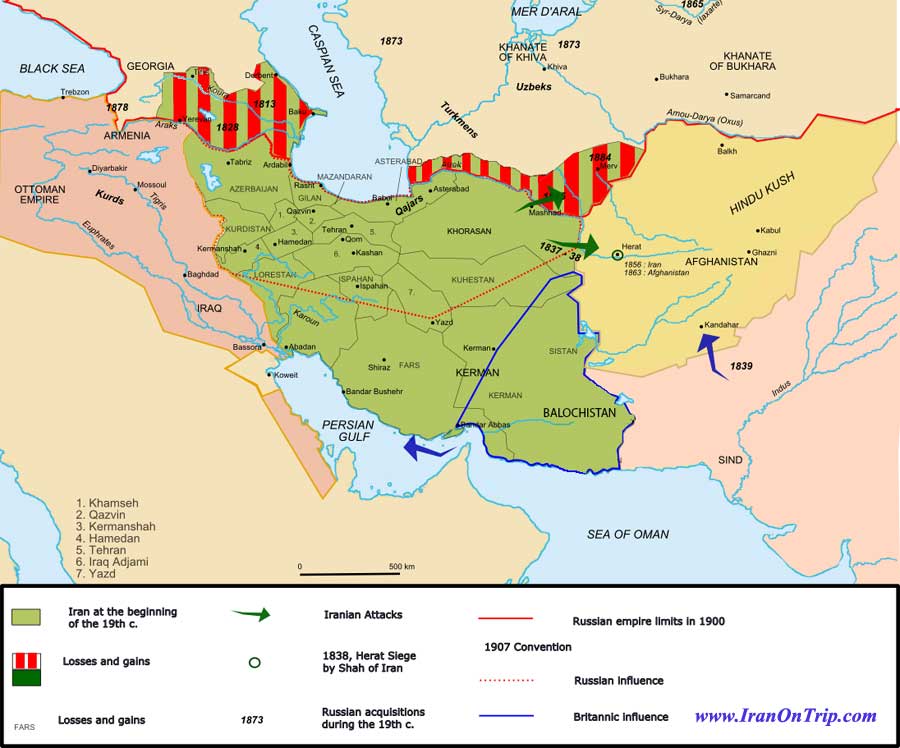
The Qajar dynasty ( Qajar (help•info)) (Persian: سلسله قاجاریه or دودمان قاجار; also romanised as Ghajar, Kadjar, Qachar etc.) is a Persianized Iranian royal family of Turkic origin, which ruled Persia (Iran) from 1785 to 1925. The Qajar family took full control of Iran in 1794, deposing Lotf 'Ali Khan, the last of the Zand dynasty, and re-asserted Persian sovereignty over parts of the Caucasus. In 1796, Mohammad Khan Qajar seized Mashhad which was under Durrani suzerainty, putting an end to the Afsharid dynasty, and Mohammad Khan was formally crowned as shah. In Iran, the Qajar dynasty lost many of its controlled areas to the Russians.
Origins
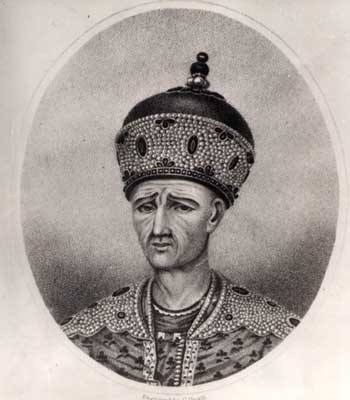
The Qajar rulers were members of the Karagöz "Black-Eye" sept of the Qajars, who themselves were members of the Karapapak or "Black Hats" lineage of the Oghuz Turks. Qajars first settled during the Mongol period in the vicinity of Azerbaijan and were among the seven Qizilbash tribes that supported the Safavids. The Safavids "left Arran (present-day Republic of Azerbaijan) to local Turkic khans", and, "in 1554 Ganja was governed by Shahverdi Soltan Ziyadoglu Qajar, whose family came to govern Karabakh in southern Arran".Qajars filled a number of diplomatic missions and governorships in the 16–17th centuries for the Safavids. The Qajars were resettled by Shah Abbas I throughout Iran. The great number of them also settled in Astarabad (present-day Gorgan, Iran) near the south-eastern corner of the Caspian Sea, and it would be this branch of Qajars that would rise to power. The immediate ancestor of the Qajar dynasty, Shah Qoli Khan of the Quvanlu of Ganja, married into the Quvanlu Qajars of Astarabad. His son, Fath Ali Khan (born c. 1685–1693) was a renowned military commander during the rule of the Safavid shahs Sultan Husayn and Tahmasp II. He was killed on the orders of Shah Nader Shah in 1726. Fath Ali Khan's son Mohammad Hasan Khan Qajar (1722–1758) was the father of Mohammad Khan Qajar and Hossein Qoli Khan (Jahansouz Shah), father of "Baba Khan," the future Fath-Ali Shah Qajar. Mohammad Hasan Khan was killed on the orders of Karim Khan of the Zand dynasty.
Within 126 years between the demise of the Safavid state and the rise of Naser al-Din Shah Qajar, the Qajars had evolved from a shepherd-warrior tribe with strongholds in northern Persia into a Persian dynasty with all the trappings of a Perso-Islamic monarchy.
Rise to power
"Like virtually every dynasty that ruled Persia since the 11th century, the Qajars came to power with the backing of Turkic tribal forces, while using educated Persians in their bureaucracy". In 1779 following the death of Karim Khan of the Zand dynasty, Mohammad Khan Qajar, the leader of the Qajars, set out to reunify Iran. Mohammad Khan was known as one of the cruelest kings, even by the 18th century Iranian standards. In his quest for power, he razed cities, massacred entire populations, and blinded some 20,000 men in the city of Kerman because the local populace had chosen to defend the city against his siege.The Qajar armies were composed of a small number of Turkoman bodyguards and Georgian slaves. By 1794, Mohammad Khan had eliminated all his rivals, including Lotf Ali Khan, the last of the Zand dynasty. He reestablished Persian control over the territories in the Caucasus. Agha Mohammad established his capital at Tehran, a village near the ruins of the ancient city of Rayy. In 1796 he was formally crowned as shah. In 1797, Mohammad Khan Qajar was assassinated in Shusha, the capital of Karabakh Khanate, and was succeeded by his nephew, Fath-Ali Shah Qajar.
War with Russia
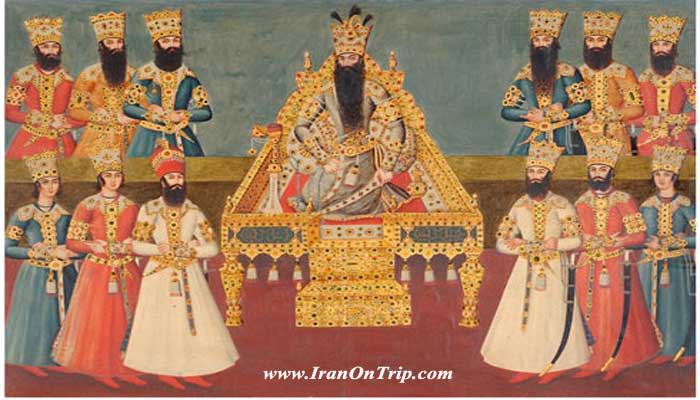
In 1803, under Fath Ali Shah, Qajars set out to fight against the Russian Empire, in what was known as Russo-Persian War of 1804–1813, due to concerns about the Russian expansion into Caucasus which was an Iranian domain, although some of the Khanates of the Caucasus were considered independent or semi-independent by the time of Russian expansion in 19th century, this period marked the first major economic and military encroachments on Iranian interests during the colonial era. Qajar army suffered a major military defeat in the war and under the terms of the Treaty of Gulistan in 1813, Iran recognized Russian annexation of Georgia and most of the Caucasus region. The second Russo-Persian War of the late 1820s ended even more disastrously for Qajar Iran with temporary occupation of Tabriz and the signing of Treaty of Turkmenchay in 1828, acknowledging Russian sovereignty over the entire South Caucasus, the area north of the Aras River.
Fath Ali Shah's reign saw increased diplomatic contacts with the West and the beginning of intense European diplomatic rivalries over Iran. His grandson Mohammad Shah, who fell under the Russian influence and made two unsuccessful attempts to capture Herat, succeeded him in 1834. When Mohammad Shah died in 1848 the succession passed to his son Nasser-e-Din, who proved to be the ablest and most successful of the Qajar sovereigns.
Development and decline
During Nasser-e-Din Shah's reign, Western science, technology, and educational methods were introduced into Persia and the country's modernization was begun. Nasser ed-Din Shah tried to exploit the mutual distrust between Great Britain and Russia to preserve Persia's independence, but foreign interference and territorial encroachment increased under his rule. He contracted foreign loans to finance expensive trips to Europe. These trips were part of a strategy to put Persia on the map as an independent, ancient but civilized state. Although the trips in this field were rather successful, he was not able to prevent Britain and Russia from encroaching into regions of traditional Persian influence. In 1856, during the Anglo-Persian War, Britain prevented Persia from reasserting control over Herat. The city had been part of Persia in Safavid times, but Herat had been under non-Persian rule since the mid-18th century. Britain also extended its control to other areas of the Persian Gulf during the 19th century. Meanwhile, by 1881, Russia had completed its conquest of present-day Turkmenistan and Uzbekistan, bringing Russia's frontier to Persia's northeastern borders and severing historic Persian ties to the cities of Bukhara and Samarqand. Several trade concessions by the Persian government put economic affairs largely under British control. By the late 19th century, many Persians believed that their rulers were beholden to foreign interests.
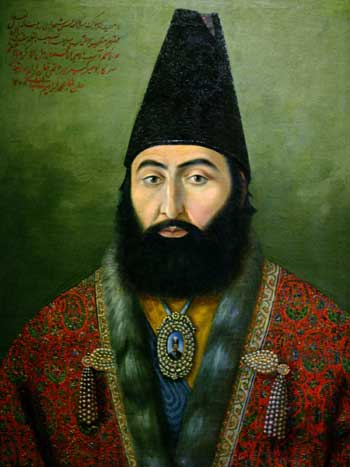
Mirza Taghi Khan Amir Kabir, was the young prince Nasser-e-Din's advisor and constable. With the death of Mohammad Shah in 1848, Mirza Taqi was largely responsible for ensuring the crown prince's succession to the throne. When Nasser ed-Din succeeded to the throne, Amir Nezam was awarded the position of prime minister and the title of Amir Kabir, the Great Ruler.
At that time, Persia was nearly bankrupt. During the next two and a half years Amir Kabir initiated important reforms in virtually all sectors of society. Government expenditure was slashed, and a distinction was made between the private and public purses. The instruments of central administration were overhauled, and Amir Kabir assumed responsibility for all areas of the bureaucracy. Foreign interference in Persia's domestic affairs was curtailed, and foreign trade was encouraged. Public works such as the bazaar in Tehran were undertaken. Amir Kabir issued an edict banning ornate and excessively formal writing in government documents; the beginning of a modern Persian prose style dates from this time.
One of the greatest achievements of Amir Kabir was the building of Dar ol Fonoon, the first modern university in Persia and the Middle East. Dar-ol-Fonoon was established for training a new cadre of administrators and acquainting them with Western techniques. Amir Kabir ordered the school to be built on the edge of the city so it could be expanded as needed. He hired French and Russian instructors as well as Persians to teach subjects as different as Language, Medicine, Law, Geography, History, Economics, and Engineering. Unfortunately, Amir Kabir did not live long enough to see his greatest monument completed, but it still stands in Tehran as a sign of a great man's ideas for the future of his country.
These reforms antagonized various notables who had been excluded from the government. They regarded the Amir Kabir as a social upstart and a threat to their interests, and they formed a coalition against him, in which the queen mother was active. She convinced the young shah that Amir Kabir wanted to usurp the throne. In October 1851 the shah dismissed him and exiled him to Kashan, where he was murdered on the shah's orders. Through his marriage to Ezzat od-Doleh, Amir Kabir had been the brother-in-law of the shah.
Constitutional Revolution
When Nasser al-Din Shah Qajar was assassinated by Mirza Reza Kermani in 1896, the crown passed to his son Mozaffar-e-din. Mozaffar-e-din Shah was a moderate, but relatively ineffective ruler. Royal extravagances coincided with an inadequate ability to secure state revenue which further exacerbated the financial woes of the Qajar. In response the Shah procured two large loans from Russia (in part to fund personal trips to Europe.) Public anger mounted as the Shah sold off concessions – such as road building monopolies, authority to collect duties on imports, etc. – to European interested in return for generous payments to the Shah and his officials. Popular demand to curb arbitrary royal authority in favor of rule of law increased as concern regarding growing foreign penetration and influence heightened.
The shah's failure to respond to protests by the religious establishment, the merchants, and other classes led the merchants and clerical leaders in January 1906 to take sanctuary from probable arrest in mosques in Tehran and outside the capital. When the shah reneged on a promise to permit the establishment of a "house of justice", or consultative assembly, 10,000 people, led by the merchants, took sanctuary in June in the compound of the British legation in Tehran. In August the shah, through the issue of a decree promised a constitution. In October an elected assembly convened and drew up a constitution that provided for strict limitations on royal power, an elected parliament, or Majles, with wide powers to represent the people, and a government with a cabinet subject to confirmation by the Majles. The shah signed the constitution on December 30, 1906, but refusing to forfeit all of his power to the Majles, attached a caveat that made his signature on all laws required for their enactment. He died five days later. The Supplementary Fundamental Laws approved in 1907 provided, within limits, for freedom of press, speech, and association, and for security of life and property. The hopes for constitutional rule were not realized, however.
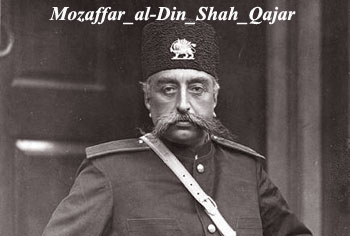
Mozaffar-e-din Shah's son Mohammad Ali Shah (reigned 1907–1909), who, through his mother, was also the grandson of Prime-Minister Amir Kabir (see before), with the aid of Russia, attempted to rescind the constitution and abolish parliamentary government. After several disputes with the members of the Majlis, in June 1908 he used his Russian-officered Persian Cossacks Brigade to bomb the Majlis building, arrest many of the deputies, and close down the assembly. Resistance to the shah, however, coalesced in Tabriz, Isfahan, Rasht, and elsewhere. In July 1909, constitutional forces marched from Rasht to Tehran lead by Mohammad Vali Khan Sepahsalar Khalatbari Tonekaboni, deposed the Shah, and re-established the constitution. The ex-shah went into exile in Russia. Mohammad Ali Shah died in San Remo, Italy in April 1925. As fate would have it, every future Shah of Iran would also die in exile.
On 16 July 1909, the Majles voted to place Mohammad Ali Shah's 11 year old son, Ahmad Shah on the throne. Although the constitutional forces had triumphed, they faced serious difficulties. The upheavals of the Constitutional Revolution and civil war had undermined stability and trade. In addition, the ex-shah, with Russian support, attempted to regain his throne, landing troops in July 1910. Most serious of all, the hope that the Constitutional Revolution would inaugurate a new era of independence from the great powers ended when, under the Anglo-Russian Agreement of 1907, Britain and Russia agreed to divide Persia into spheres of influence. The Russians were to enjoy exclusive right to pursue their interests in the northern sphere, the British in the south and east; both powers would be free to compete for economic and political advantage in a neutral sphere in the center. Matters came to a head when Morgan Shuster(also spelled Schuster), a United States administrator hired as treasurer general by the Persian government to reform its finances, sought to collect taxes from powerful officials who were Russian protégés and to send members of the treasury gendarmerie, a tax department police force, into the Russian zone. When in December 1911 the Majlis unanimously refused a Russian ultimatum demanding Shuster's dismissal, Russian troops, already in the country, moved to occupy the capital. To prevent this, on 20 December, Bakhtiari chiefs and their troops surrounded the Majles building, forced acceptance of the Russian ultimatum, and shut down the assembly, once again suspending the constitution.
Fall of the dynasty
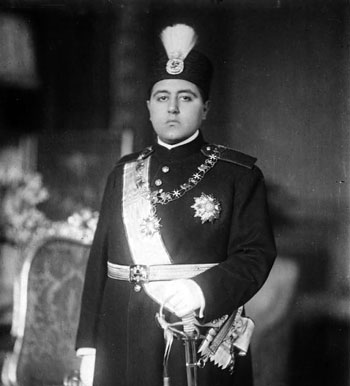
Soltan Ahmad Shah was born 21 January 1898 in Tabriz, and succeeded to the throne at age 11. However, the occupation of Persia during World War I by Russian, British, and Ottoman troops was a blow from which Ahmad Shah never effectively recovered.In February 1921, Reza Khan, commander of the Persian Cossack Brigade, staged a coup d'état, becoming the effective ruler of Iran. In 1923, Ahmad Shah went into exile in Europe. Reza Khan induced the Majles to depose Ahmad Shah in October 1925, and to exclude the Qajar dynasty permanently. Reza Khan was subsequently proclaimed Shah as Reza Shah Pahlavi, reigning from 1925 to 1941.
Shahs of Persia, 1794–1925
.jpg)
.jpg)
.....
.....
.....

.jpg)



























